Understanding how to effectively analyze pivot points can significantly enhance one's trading strategies and decision-making processes.
By following a structured approach that involves ten easy steps, traders can navigate the complexities of the market with more confidence and precision.
From calculating pivot points to recognizing patterns and utilizing them for exits, each step plays a crucial role in deriving valuable insights for successful trading.
The systematic breakdown of these steps offers a roadmap to harness the power of pivot points effectively.
Understanding Pivot Point Basics
In the realm of financial analysis, understanding pivot point basics serves as a fundamental pillar for traders seeking to navigate the complexities of market dynamics with precision and foresight. Pivot points are key levels derived from the previous trading session's high, low, and close prices. These levels act as crucial support and resistance points in the market, influencing traders' decisions.
When the price is above the pivot point, it indicates a bullish sentiment, whereas trading below suggests a bearish bias. Traders utilize pivot points as a technical analysis tool to identify potential price reversal points. Different types of pivot points, such as Standard, Fibonacci, and Woodie's, offer varying levels of support and resistance, catering to diverse trading strategies.
Calculating Pivot Points
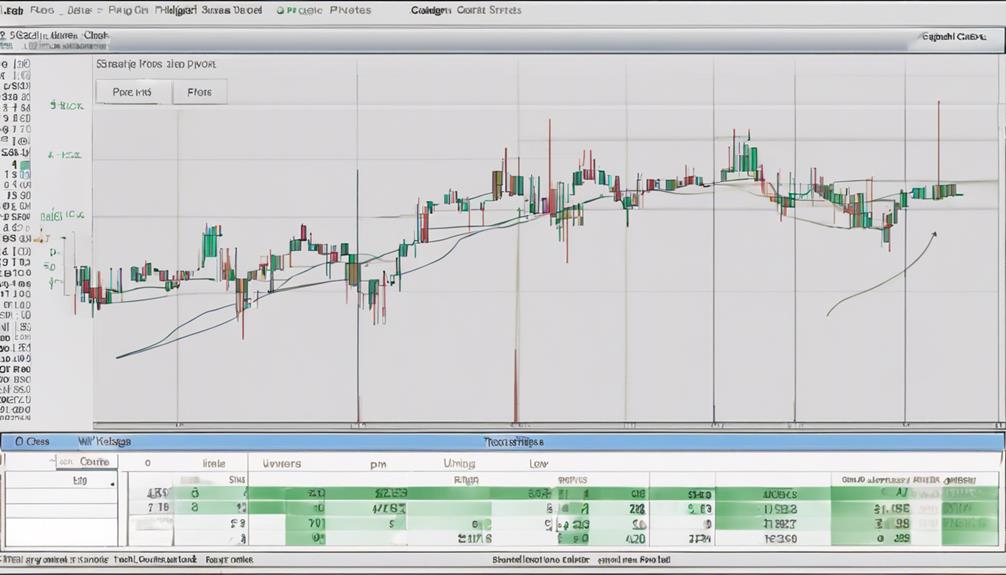
Calculating pivot points involves a precise formula that considers the previous day's high, low, and close prices. The central pivot point (PP) serves as a key reference level, with support and resistance levels branching out from this central point.
Understanding the calculations behind pivot points is essential for traders aiming to identify potential market turning points and make informed trading decisions.
Pivot Point Formula
The central pivot point in trading is determined by averaging the previous high, low, and closing prices from the last trading session. This calculation forms the foundation for establishing support and resistance levels, aiding in predicting potential price movements. Key levels for entry, exit, and setting stop-loss orders are derived from the pivot point formula.
Here are key points to remember:
- The central pivot point is calculated as (Previous High + Previous Low + Previous Close) / 3.
- Support and resistance levels are determined from the pivot point to inform trading decisions.
- Pivot points play a crucial role in developing trading strategies.
- By using pivot points, traders can make informed decisions on entry, exit, and stop-loss orders.
Importance of Pivot Points
Pivot points serve as pivotal indicators in financial markets, guiding traders in identifying critical support and resistance levels for informed decision-making. These points are derived from the previous day's high, low, and closing prices, aiding in recognizing market sentiment and potential price reversals.
By utilizing pivot points, traders can establish profit targets and make calculated entry and exit decisions. Different types of pivot points such as Standard, Fibonacci, Camarilla, Woodie's, and DeMark offer varied calculations, enabling traders to strategize based on specific levels of support and resistance.
Understanding the significance of pivot points is paramount for traders looking to navigate market trends effectively and make well-informed strategic trading decisions.
Identifying Pivot Point Levels
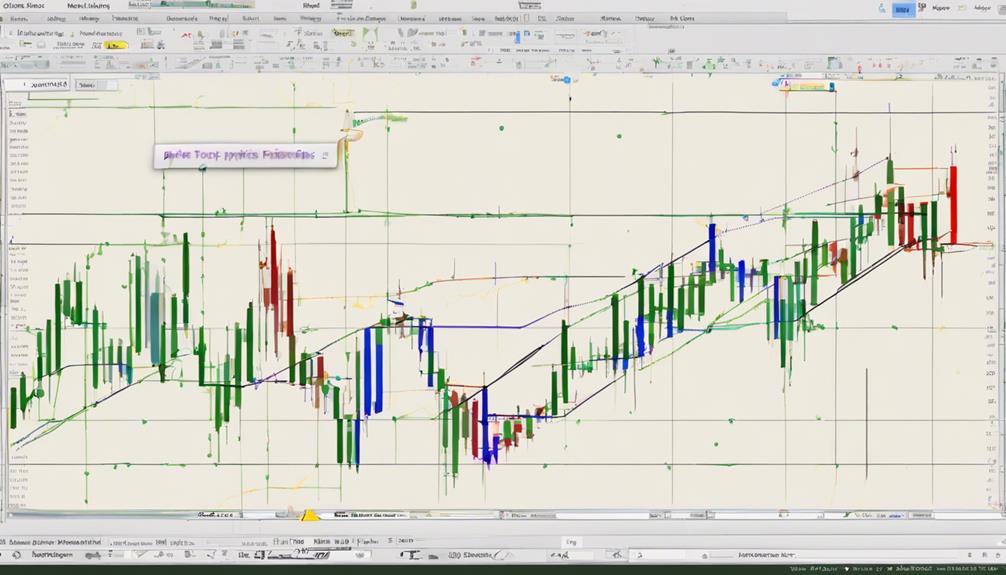
Identifying key pivot point levels is essential for traders seeking to make well-informed decisions in the financial markets. Pivot point levels, including the central pivot point (PP), support levels (S1, S2, S3), and resistance levels (R1, R2, R3), are crucial reference points derived from the previous trading session's high, low, and close prices. Traders leverage these levels to pinpoint potential entry and exit points, set strategic stop-loss orders, and establish profit targets. Additionally, pivot point levels enable traders to assess market sentiment and make informed trading decisions based on the price action observed around these levels.
- Pivot point levels provide crucial guidance for determining entry and exit points.
- Support and resistance levels offer insights into potential price reversals.
- Stop-loss orders and profit targets can be effectively set based on pivot point levels.
- Market sentiment analysis and trading decisions are influenced by price action around pivot points.
Analyzing Price Action
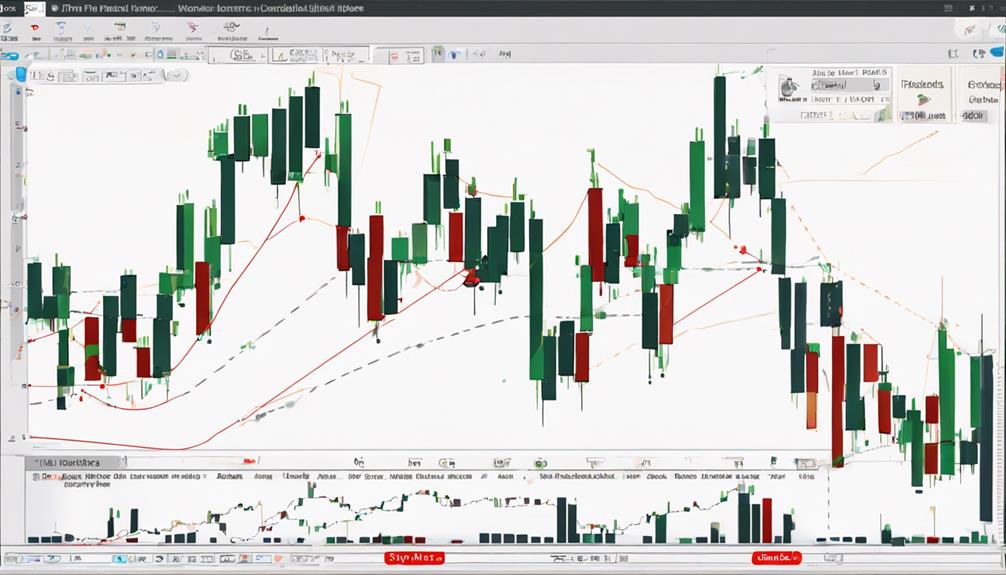
By observing how prices interact with key levels, traders can gain valuable insights into market sentiment and potential trend shifts. Analyzing price action at pivot points involves closely monitoring how the price behaves when approaching these significant levels.
Traders should watch for price reversals, where the price changes direction, bounces off a pivot point, or breakthroughs where the price moves decisively through the level. Additionally, paying attention to volume and candlestick patterns near pivot points can provide further confirmation of potential price movements.
Understanding how price reacts to pivot points is essential for gauging market sentiment and predicting possible trend changes. This analysis helps traders identify optimal entry and exit levels, as well as set effective stop-loss orders based on the reactions seen at pivot points.
Recognizing Pivot Point Patterns
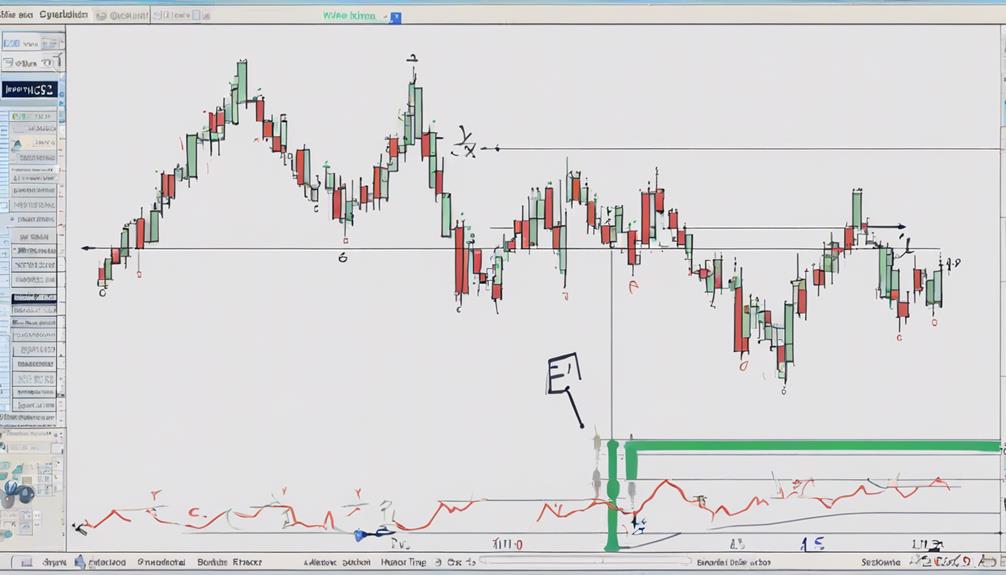
Recognizing pivot point patterns is crucial for traders seeking to anticipate market movements at key levels.
Classic patterns like pivot point bounces and breakouts offer valuable insights into potential price reversals.
Patterns such as the 'double bottom' or 'double top' around pivot points serve as significant indicators for decision-making in trading strategies.
Identifying Key Pivot Points
When delving into pivot point analysis, traders must proficiently locate the central pivot point (PP) and the corresponding support/resistance levels (S1, S2, R1, R2) to effectively gauge market sentiment and anticipate potential price movements.
Understanding pivot point patterns aids in setting profit targets and stop-loss levels.
Recognizing pivot point patterns helps in identifying potential price reversals.
Pivot point patterns include classic, Fibonacci, and Camarilla levels.
Identifying key pivot points is crucial for making informed trading decisions based on market sentiment.
Understanding Pivot Point Significance
Understanding the significance of pivot points involves a comprehensive analysis of various patterns that can provide valuable insights into market sentiment and potential price movements. Traders use pivot points as a key technical analysis indicator in Forex to calculate and identify support and resistance levels based on the previous day's price action.
The main pivot point acts as a reference level, with trading above indicating a bullish outlook and trading below signaling bearish sentiment. By recognizing pivot point patterns such as bounces or breakouts, traders can anticipate potential price reversals and trend changes, helping them plan trades in advance and set profit targets.
These patterns offer trading opportunities based on how price behaves around these significant levels.
Utilizing Pivot Points for Entry
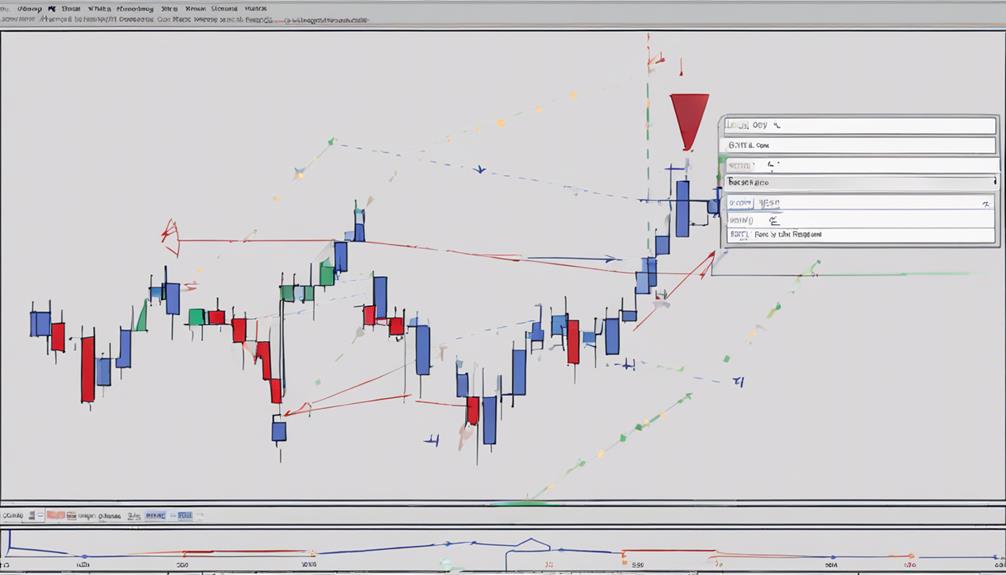
To effectively incorporate pivot points for entry in trading strategies, it is essential to utilize these key levels as indicators for favorable market entry points. When utilizing pivot points for entry, consider the following:
- Wait for the price to break above the pivot point to signal a potential bullish entry.
- Look for confirmation signals such as candlestick patterns or an increase in volume to strengthen the entry decision.
- Treat pivot points as dynamic support and resistance levels, aiding in identifying optimal entry points.
- Combine pivot points with other technical indicators to enhance the likelihood of executing successful trades.
Utilizing Pivot Points for Exit
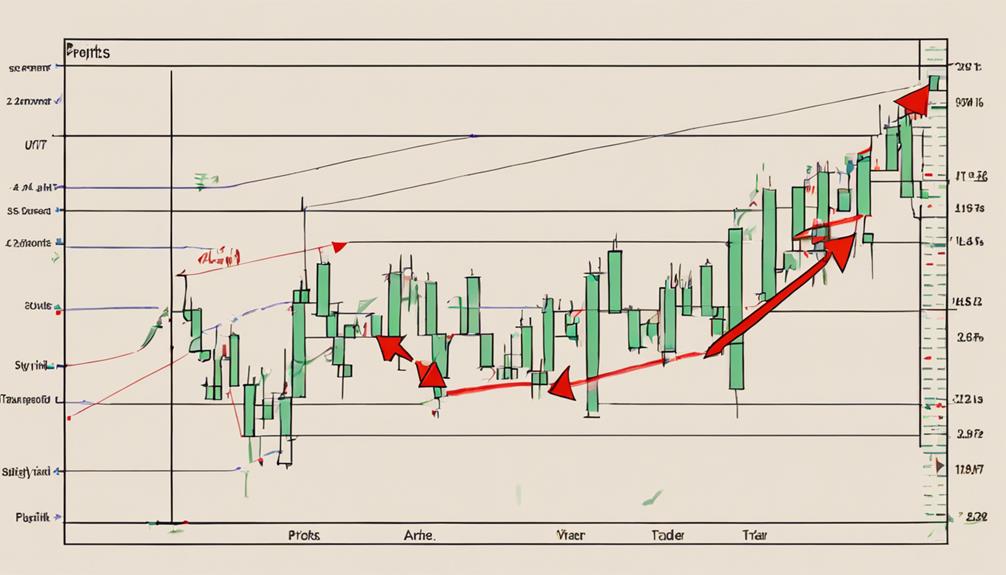
Utilizing pivot points for exit strategies involves strategically timing exits based on key support and resistance levels identified by pivot calculations. Traders often use pivot points to gauge potential price reversals or bounces, allowing them to optimize profits and manage risk effectively.
Exit Strategies Using Pivots
Implementing effective exit strategies based on pivot points involves strategically selling near resistance levels or buying near support levels to optimize trade outcomes. Traders can use pivot point levels like R1, R2, S1, and S2 as exit points for profitable trades. Utilizing pivot points for exits helps in maximizing profits and minimizing losses. Setting stop-loss orders slightly beyond pivot point levels can protect gains and limit downside risk. Exiting trades at pivot point levels can be a disciplined approach to managing trades effectively.
- Sell near resistance levels or buy near support levels.
- Use pivot point levels like R1, R2, S1, and S2 for exits.
- Set stop-loss orders slightly beyond pivot point levels.
- Exiting at pivot points promotes a disciplined trading approach.
Timing Pivot Point Exits
Analyzing pivot points to determine optimal exit points for trades is essential for traders seeking to strategically manage risk and maximize returns in their trading endeavors. When timing pivot point exits, traders often look at support and resistance levels such as R1, R2, S1, and S2 to plan their exits effectively. Exiting near these pivot point levels enables traders to secure profits or limit losses efficiently.
Monitoring price action and volume at key levels is crucial for making well-informed exit decisions. By utilizing pivot points for exits, traders adopt a strategic approach to risk management and aim at maximizing returns in their trading activities. Planning exits based on pivot points can enhance trading outcomes and improve overall performance.
Setting Stop Loss With Pivot Points
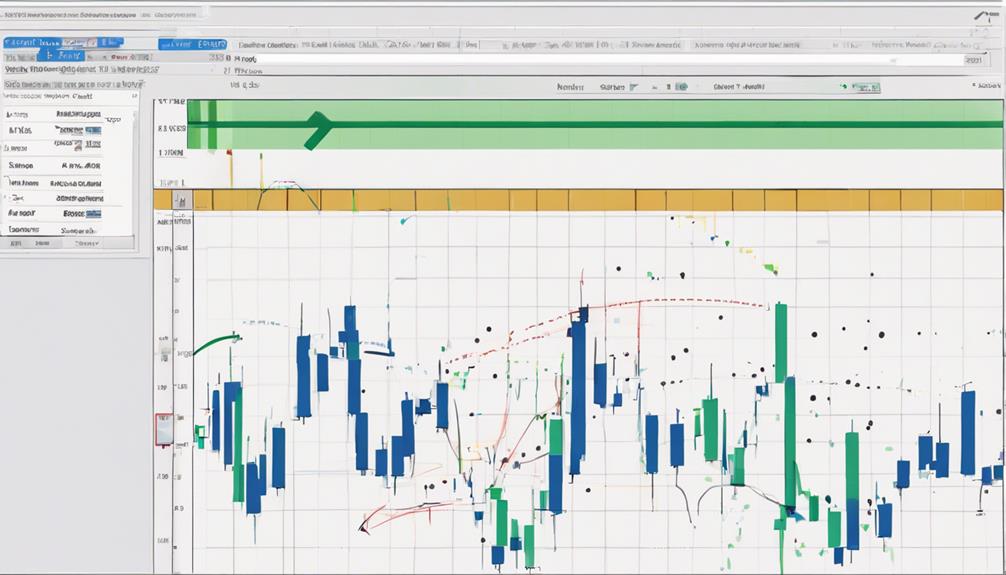
Setting stop loss with pivot points involves strategically placing the stop loss below the nearest support level identified by pivot points. Utilizing pivot points in setting stop loss offers traders a structured approach to risk management and trading discipline.
To effectively set stop loss with pivot points, consider the following:
- Identify Key Price Levels: Pivot points help in determining crucial support and resistance levels.
- Minimize Potential Losses: Placing stop loss orders based on pivot points assists in minimizing potential losses.
- Enhance Risk Management: Incorporating pivot points into stop loss strategies enhances overall risk management.
- Define Exit Points: Pivot points assist traders in defining clear exit points in case the market moves against their positions.
Monitoring Pivot Point Confirmations
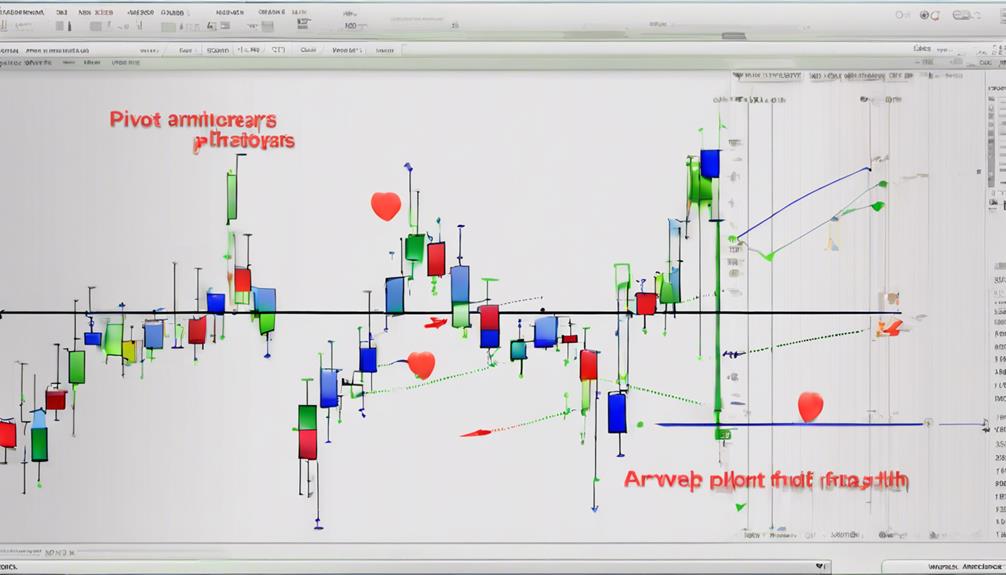
Observing pivot point confirmations through price action, candlestick patterns, and volume analysis is crucial for validating key levels in trading strategies. When monitoring pivot point levels, traders should pay close attention to how prices react around these levels. A bounce off a pivot point can indicate a strong level of support or resistance, while a break might signal a potential trend reversal. By using candlestick patterns, traders can further confirm the significance of pivot points. Bullish or bearish signals near these levels can provide additional validation for trading decisions.
Volume confirmation is another essential factor to consider when analyzing pivot points. High volume at a pivot point suggests increased market participation, reinforcing the level's importance. Traders can also enhance their analysis by incorporating technical indicators such as moving averages and the Relative Strength Index (RSI). These tools can provide additional insights into the strength of pivot points and potential trading opportunities. By combining these various forms of analysis, traders can make more informed decisions based on reliable pivot point confirmations.
Reviewing Trading Decisions

When evaluating trading decisions, it is essential to scrutinize price action surrounding pivot points to gauge market sentiment accurately. Analyzing how price interacts with these key levels can provide valuable insights into the strength and direction of the market.
To effectively review trading decisions in the context of pivot points, consider the following:
- Identify whether price movements confirm or reject pivot point levels to determine trade validity.
- Use pivot point bounces or breakouts to validate trading decisions and adjust strategies accordingly.
- Evaluate volume and momentum near pivot points for additional confirmation of trading choices.
- Consider the overall trend and pattern formations in conjunction with pivot points to make informed trading decisions.
What are the Basic Steps for Analyzing Pivot Points Before Utilizing Advanced Techniques?
Before utilizing advanced pivot points analysis techniques, it is essential to understand the basic steps for analyzing pivot points. Start by identifying the pivot point, support, and resistance levels. Then, assess the trend and look for potential reversal signals. Finally, consider incorporating advanced pivot points analysis techniques for more detailed insights.
Frequently Asked Questions
How Do You Analyse Pivot Points?
Analyzing pivot points involves calculating the central pivot point and identifying support and resistance levels. By monitoring price action around these points, traders can assess market sentiment and make strategic decisions like setting stop-loss orders and targeting profits.
What Are Pivot Points for Dummies?
Pivot points for dummies serve as fundamental levels in trading to gauge potential support and resistance. Calculated from previous day's price data, they aid in determining market sentiment, guiding entry and exit strategies based on bullish or bearish signals.
How Do You Use Pivot Points Effectively?
Effectively using pivot points involves calculating key levels from previous price data, recognizing entry and exit points, monitoring price action for support and resistance strength, integrating other indicators for accuracy, and adapting strategies to market conditions and timeframes.
How Do You Use Pivot Points for Predictions?
Utilizing pivot points for predictions involves interpreting key support and resistance levels to anticipate potential price movements. By analyzing these levels, traders can forecast market trends, identify entry and exit points, and optimize their trading strategies effectively.
Conclusion
In conclusion, mastering the analysis of pivot points is crucial for successful trading strategies. By understanding the basics, calculating levels, and utilizing price action, traders can make informed decisions based on key support and resistance levels.
Recognizing patterns and setting stop losses with pivot points can enhance trading outcomes. By monitoring confirmations and reviewing decisions, traders can adapt to changing market conditions effectively.
Remember, pivot points are a valuable tool when combined with other technical indicators for accurate analysis.
